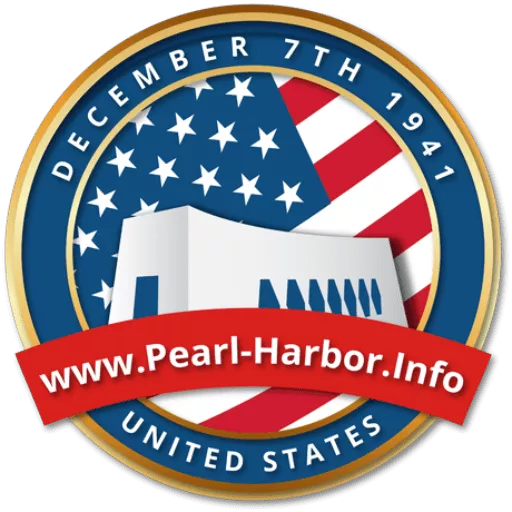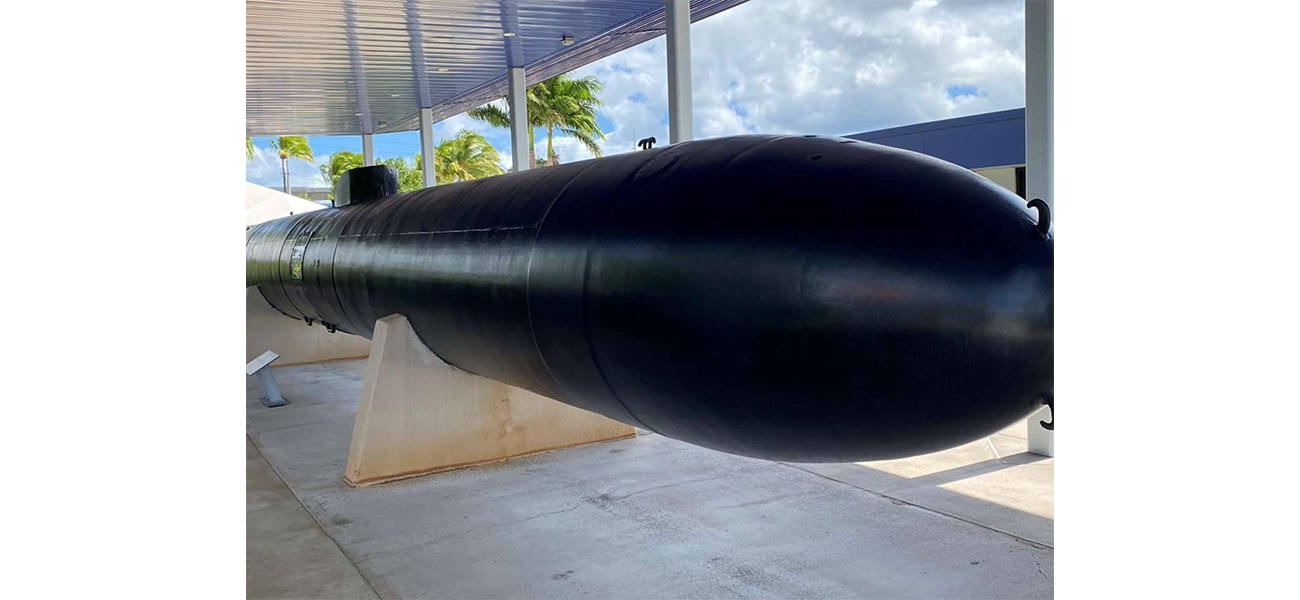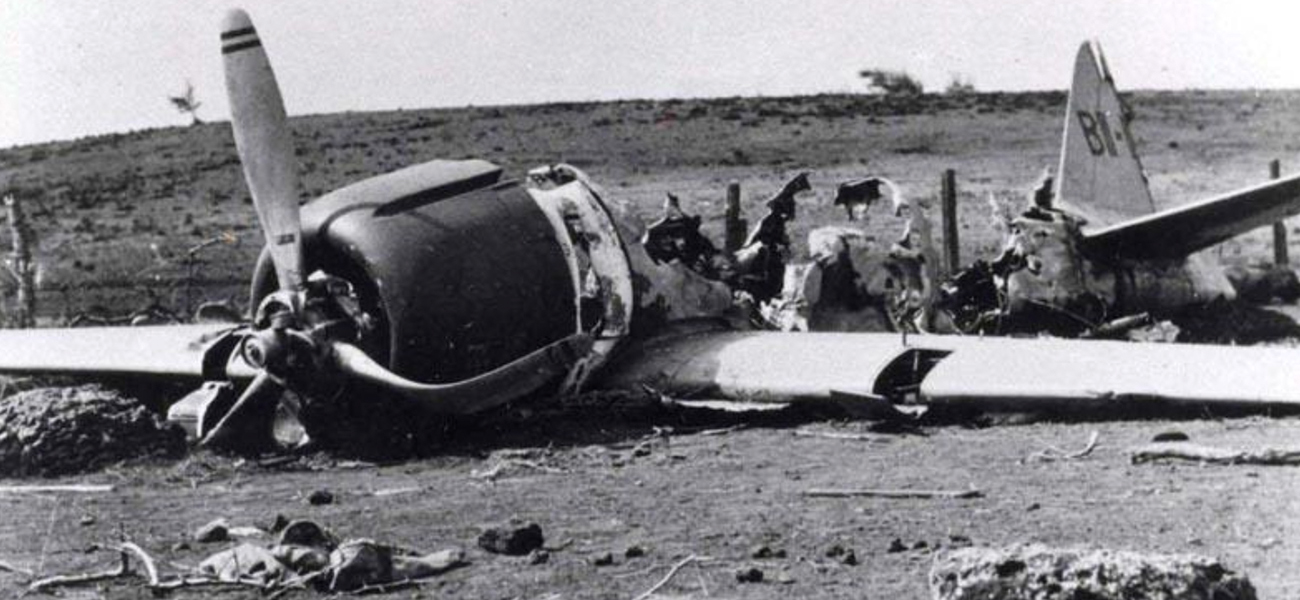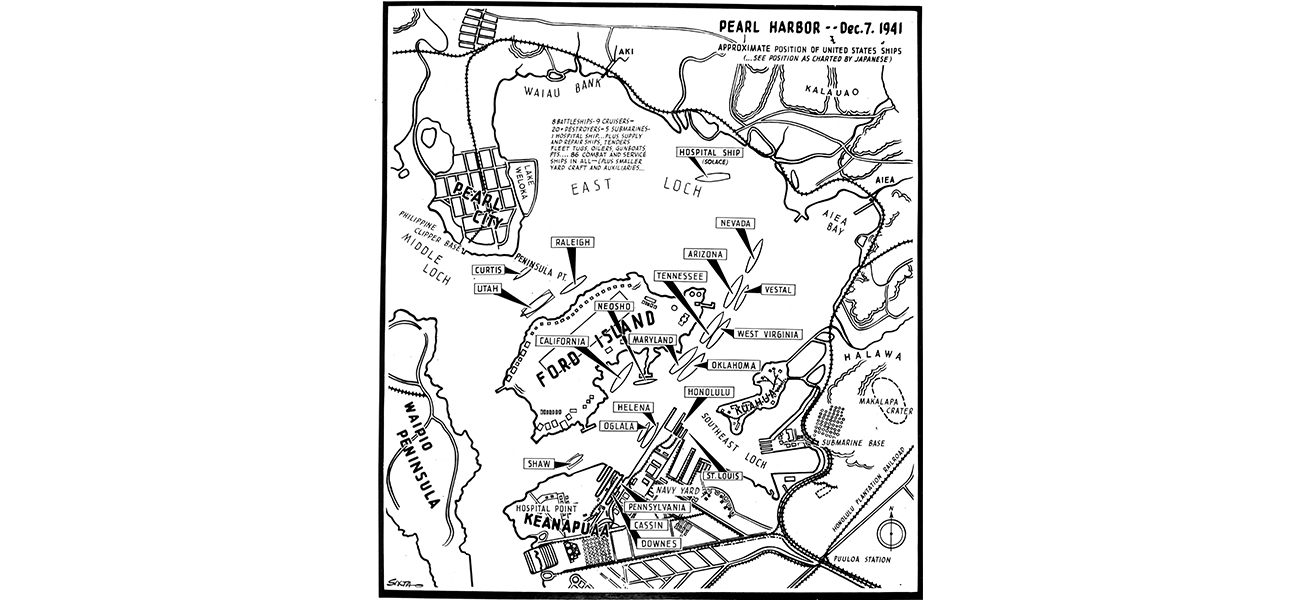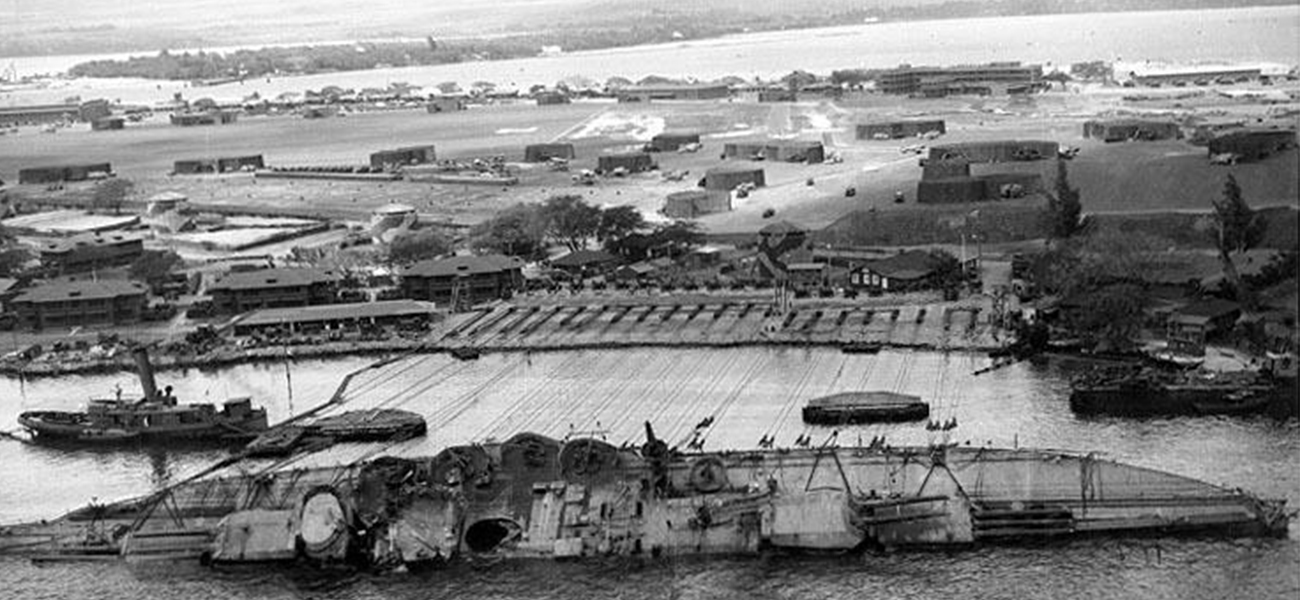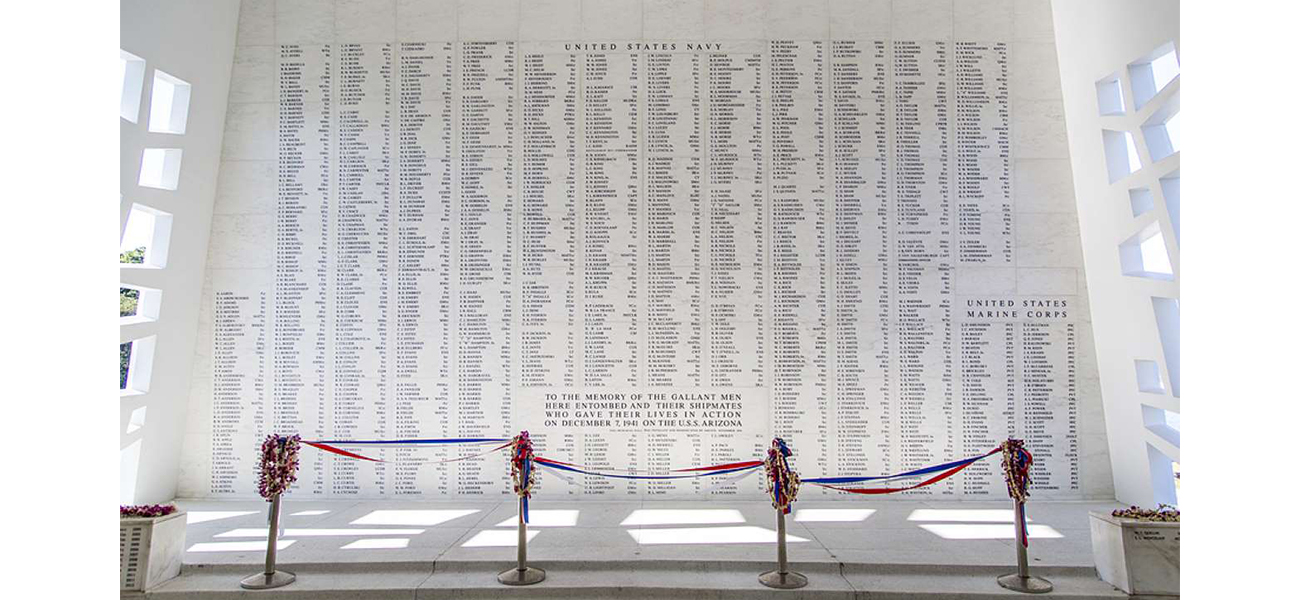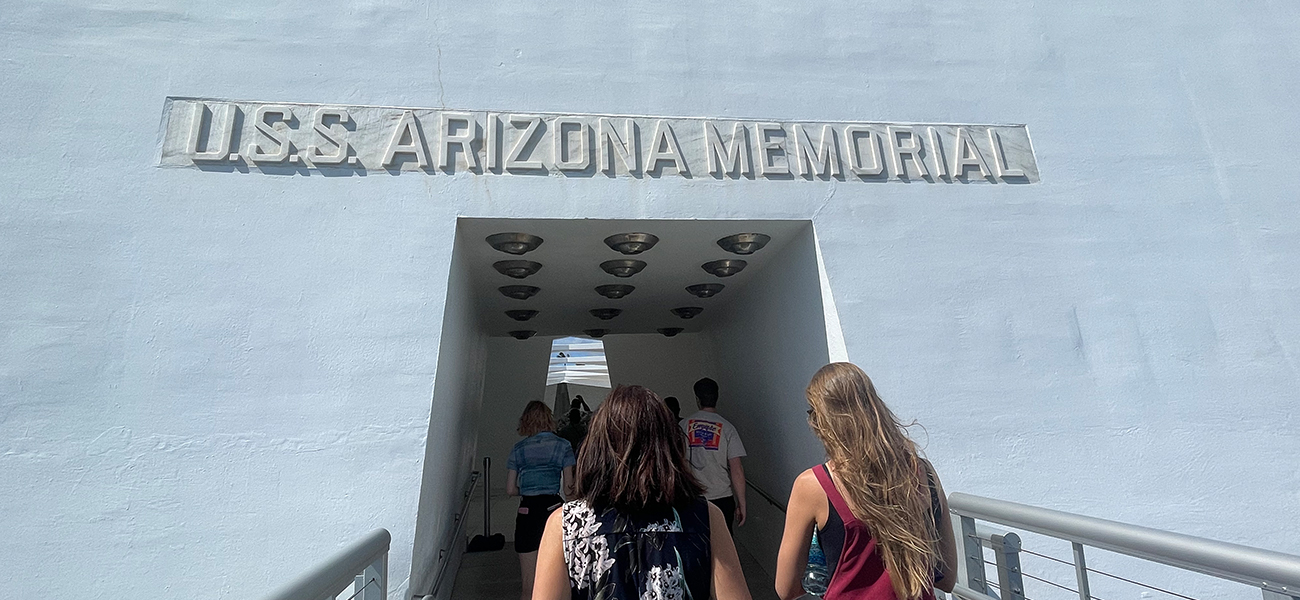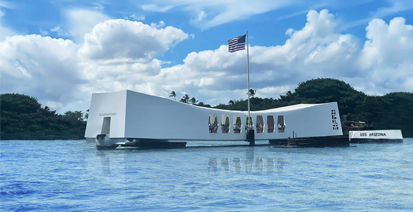Secret Japanese Midget Submarine Attack on Pearl Harbor
The concept of Japanese midget submarines, specifically the Type A Ko-hyoteki-class used during the attack on Pearl Harbor, represented a unique and innovative approach to naval warfare during World War II. Introduced by the Imperial Japanese Navy, these compact submarines were designed with the aim of executing surprise and covert attacks, showcasing a distinctive strategy in naval operations. The miniature size, carried by larger submarines, allowed for stealthy deployment, making them well-suited for clandestine missions. Their primary mission during the Pearl Harbor attack reflected a bold attempt to incapacitate powerful American battleships, marking a notable chapter in the history of submarine warfare. The design and deployment of these midget submarines demonstrated Japan’s willingness to explore unconventional tactics, even if their overall success was limited.
1.Mission of the Japanese Midget Submarines:
The primary mission of the Japanese midget submarines during the attack on Pearl Harbor was to target and sink American battleships, particularly the large and powerful ones, as part of the broader surprise assault. The submarines were meant to enter Pearl Harbor ahead of the main aerial attack force, approach the battleships, and launch torpedoes.
Their specific targets included battleships such as USS Oklahoma, USS West Virginia, USS California, and USS Nevada. The idea was to incapacitate as much of the Pacific Fleet as possible, providing the Japanese with a strategic advantage in the early stages of World War II in the Pacific. However, the midget submarines faced various challenges, and their overall impact on the success of the Pearl Harbor attack was limited.
2. Design and Armament of Type A Ko-hyoteki-class Submarine
During the attack on Pearl Harbor on December 7, 1941, Japan deployed five midget submarines, intending to target American battleships. These submarines were Type A Ko-hyoteki-class and were carried by larger I-class submarines.
One midget submarine, known as the HA-19, ran aground outside Pearl Harbor, and its crew attempted to scuttle the vessel. Another, the HA-20, fired upon and sunk. The fate of the remaining three submarines remains unclear.
The midget submarines’ impact on the overall attack was limited, as the primary damage was inflicted by aerial bombings. The midget submarine attacks, while notable, did not significantly alter the outcome of the assault on Pearl Harbor.
The Japanese midget submarines used during the attack on Pearl Harbor were Type A Ko-hyoteki-class submarines. Here are some details about their design and armament:
Design:
i. Size: These submarines were relatively small, with a length of about 78 feet (24 meters) and a beam of 6 feet (1.8 meters).
ii. Crew: Manned by a two-member crew – a pilot and a crewman.
iii. Construction: They had a cylindrical design with a conning tower, resembling a miniature version of larger submarines.
Armament:
i. Torpedoes: The primary weapon was two 18-inch (45 cm) torpedoes mounted externally on either side of the submarine. Each torpedo carried an explosive warhead.
ii. Range: The torpedoes had a relatively short range compared to larger submarine torpedoes.
The midget submarines were launched from larger I-class submarines that transported them to the vicinity of their target. Due to their size and limited capabilities, these submarines were intended for covert operations and surprise attacks rather than sustained naval engagements.
3. Success and outcome
The midget submarines deployed during the attack on Pearl Harbor had limited success. Of the five midget submarines, only one, known as HA-19, managed to enter Pearl Harbor. HA-19, however, ran aground on the east side of Oahu and was subsequently captured by the Americans. Its crew attempted to scuttle the submarine, but they were taken into custody.
Another midget submarine, HA-20, was fired upon and sunk by the USS Ward. The fate of the remaining three submarines is unclear; there is speculation that they may have been sunk by defensive measures, but concrete evidence is lacking.
Overall, the midget submarines did not achieve significant success in terms of causing substantial damage to the American fleet during the attack on Pearl Harbor. The main impact of the assault came from the aerial bombings by the Japanese carrier-based aircraft.
4. Timeline of Launch and Spotting:
The midget submarines were launched in the early hours of December 7, 1941, during the attack on Pearl Harbor. The Japanese attack on Pearl Harbor began at approximately 7:55 a.m. local time. The midget submarines were part of the initial wave of the attack, attempting to enter the harbor ahead of the main aerial assault.
The timeline is as follows:
– Launch: The larger I-class submarines carrying the midget submarines launched them before the air raid on Pearl Harbor began, likely between 3:00 a.m. and 3:30 a.m. on December 7, 1941.
– Spotted: The midget submarines were spotted in the early hours of the attack. The details of their sightings varied, with some being observed by the USS Ward before the aerial assault started, and others being detected once they were inside the harbor.
These events marked the beginning of the infamous attack on Pearl Harbor by the Imperial Japanese Navy.
5. Crew Composition:
The midget submarines used during the attack on Pearl Harbor, specifically the Type A Ko-hyoteki-class submarines, typically had a crew of two. The crew composition included:
I. Pilot (1st Crew Member): This crew member served as the pilot responsible for navigating the submarine and executing the mission. They were tasked with operating the controls and ensuring the successful deployment of torpedoes.
II. Crewman (2nd Crew Member): The second crew member supported the pilot and assisted in various tasks. Their responsibilities included managing equipment, communication, and overall collaboration with the pilot to carry out the mission.
These two-member crews operated in confined spaces within the midget submarines, reflecting the compact design of these vessels. The crews faced significant challenges due to the limited size and capabilities of the submarines, and their mission was part of the larger surprise attack on Pearl Harbor during World War II.
6. Present Placement and Fate of Japanese Midget Submarines:
The present placement and fate of the Japanese midget submarines involved in the attack on Pearl Harbor vary for each vessel:
1. HA-19:
– Placement: Captured after running aground, HA-19 was salvaged by the U.S. Navy.
– Fate: It was later displayed as a war trophy and is currently exhibited at the National Museum of the Pacific War in Fredericksburg, Texas. The submarine serves as a historical artifact, allowing visitors to learn about the events of the attack.
2. HA-20:
– Fate: HA-20 was sunk by gunfire from the USS Ward before the attack.
– Present Placement: The wreckage of HA-20 is believed to be located off the coast of Oahu, but the exact coordinates may vary. The remnants serve as a historical reminder of the events surrounding the attack.
3. Remaining Submarines:
– Fate: The fate of the other three midget submarines (launched during the attack) remains uncertain.
– Present Placement: There is no conclusive evidence regarding the current location or condition of these submarines. Ongoing historical research and occasional discoveries of wreckage contribute to understanding the legacy of the attack on Pearl Harbor.
These details highlight the varied outcomes for each midget submarine and their significance in preserving historical context.
7. The Impact: Japanese Midget Submarines in World War II Naval Strategy
Significance of Japanese Midget Submarines in World War II: Stealth, Surprise, and Strategic Intent
The Japanese midget submarines, specifically the Type A Ko-hyoteki-class, held notable significance during World War II. Their unique attributes contributed to their historical importance:
i. Stealth and Covert Operations:
– The compact size and design allowed for discreet deployment, facilitating covert missions without detection.
– Carried by larger submarines, these midget submarines demonstrated an innovative approach to surprise attacks.
ii. Strategic Intent at Pearl Harbor:
– During the attack on Pearl Harbor, the midget submarines played a role in the broader strategy to incapacitate American battleships, targeting key assets in a surprise assault.
– Though their success was limited, their inclusion showcased a multi-faceted approach to achieving naval superiority.
iii. Technological Innovation:
– The development of midget submarines represented a technological innovation for the time, exploring unconventional tactics in naval warfare.
– Their design and deployment reflected a willingness to experiment with new strategies and technologies.
iv. Legacy and Historical Reminders:
– The wreckage and remnants of these submarines, particularly HA-19, serve as tangible historical artifacts, preserving the memory of the events at Pearl Harbor.
– Ongoing research and occasional discoveries contribute to understanding the impact of these submarines on naval history.
In summary, the Japanese midget submarines held significance not only for their role in specific wartime operations but also for their representation of innovative thinking and the evolving nature of naval warfare during World War II.
8. Insights through the attack
The attack on Pearl Harbor and the use of Japanese midget submarines prompted the United States to enhance anti-submarine warfare capabilities, investing in advanced sonar systems and more effective depth charges. Submarine technology also underwent significant evolution, with improvements in offensive and defensive capabilities. Naval intelligence and surveillance were heightened to prioritize early detection, and strategic adaptations were made to anticipate and counter surprise attacks. While it’s challenging to directly attribute specific developments solely to the inspiration from the midget submarine attack, these lessons contributed to a broader evolution in naval strategy and technology during and after World War II.
